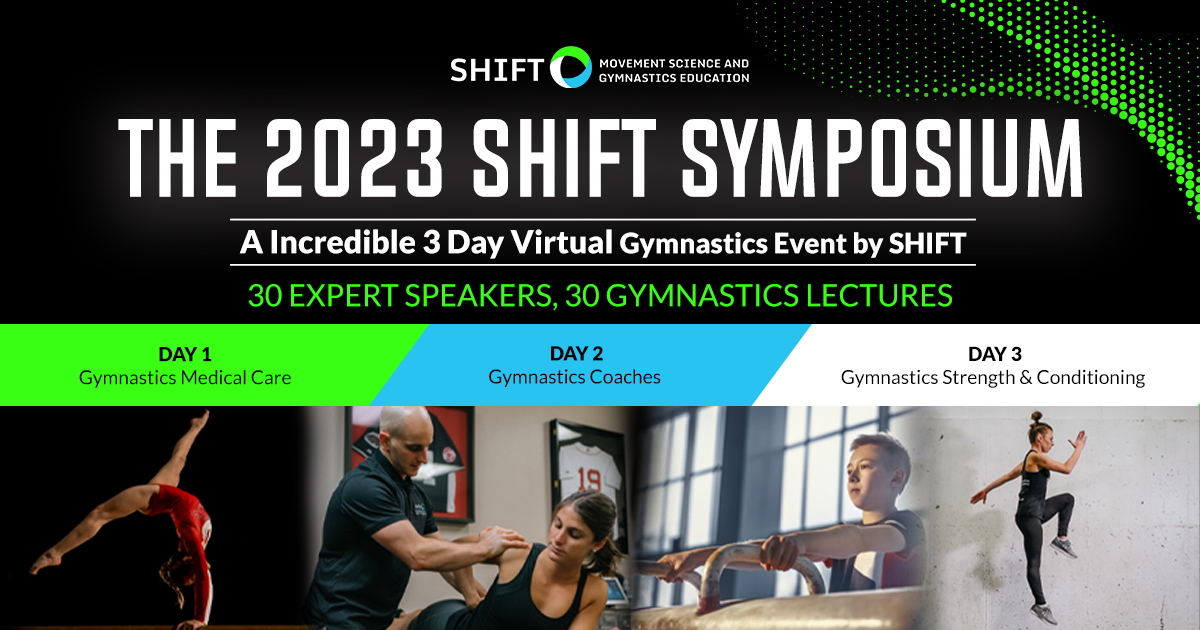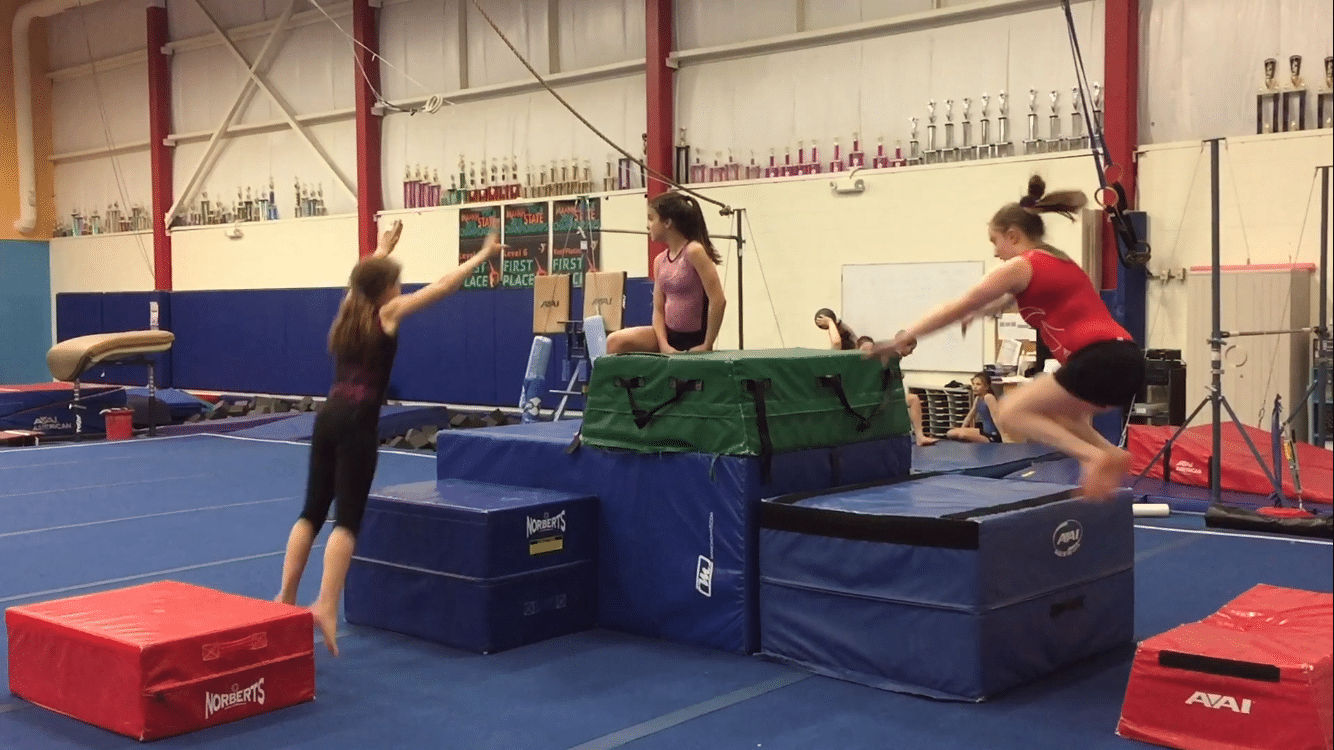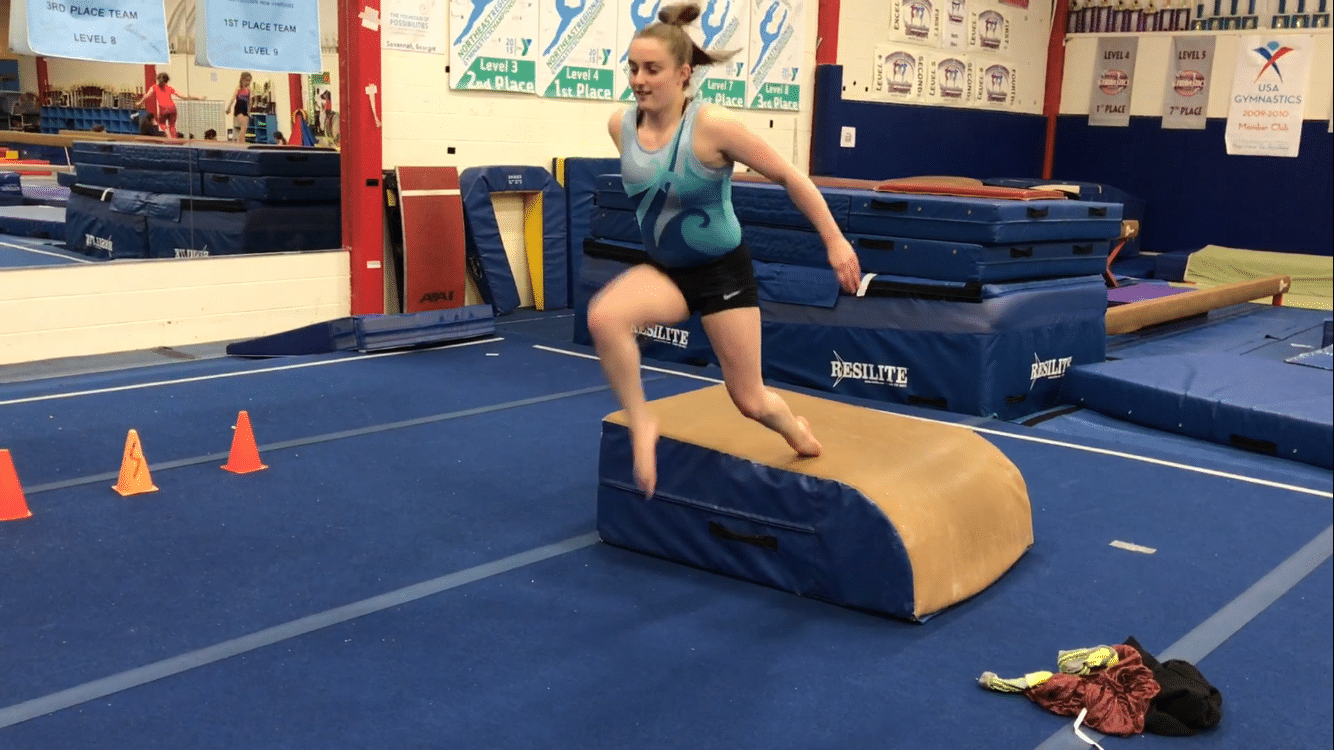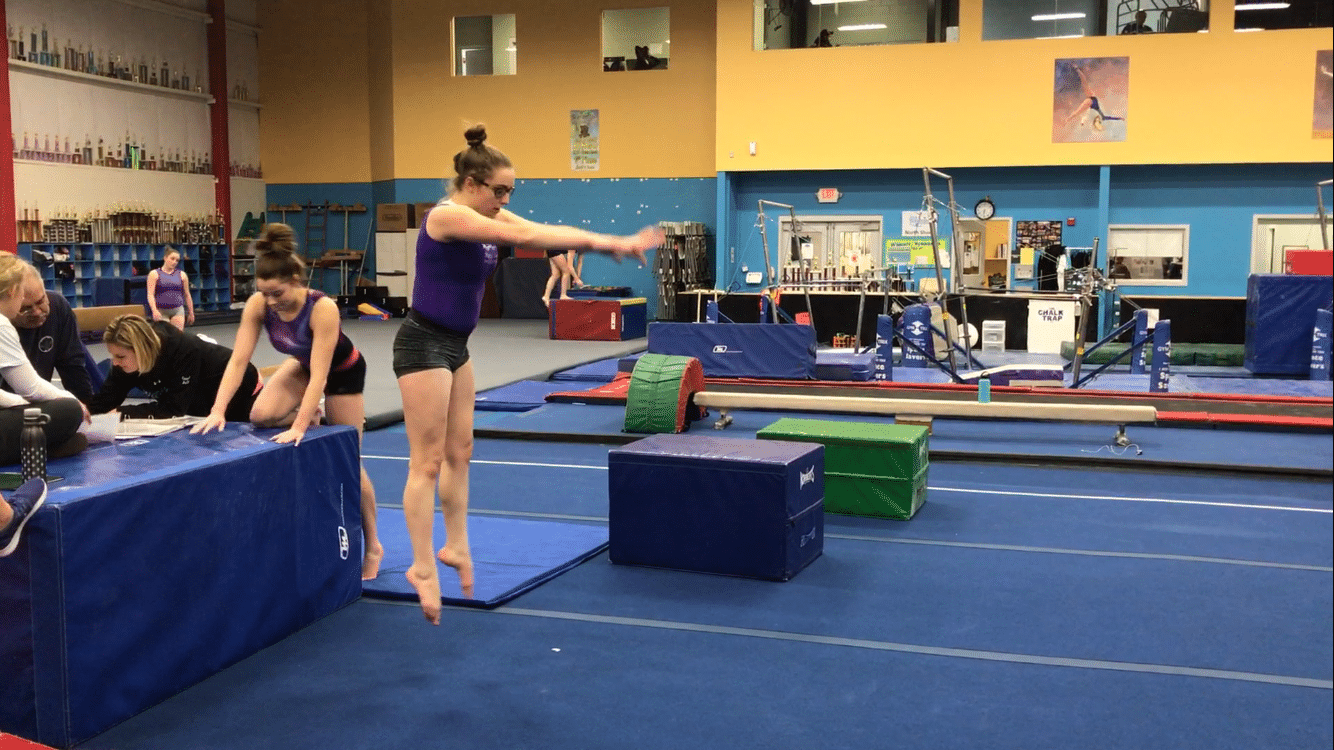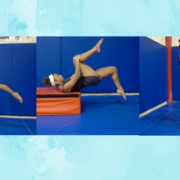The Best Gymnastics Leg Conditioning For Explosive Power on Vault and Floor
Gymnastics is a sport based around explosive power, with a heavy focus on the lower body. As a result, it’s crucial that gymnasts have a very strong set of legs to help them sprint, jump, land, and do high-difficulty skills. Not to mention, the forces in gymnastics and insanely high, ranging between 15-18x body weight in impact forces. To handle these forces safely, and reduce the risk of injury, a robust leg conditioning program is essential.
The problem is as a coach wrapping your head around creating a good, well-rounded lower body strength program can be a nightmare. Many are endless YouTube videos, social media posts, and clinics giving people thousands of drills. Without a systematic approach and way to categorize things, people can get lost easily.
In this blog post, I wanted to share how to think about lower body strength programs to give people a good mental framework to use. Then, I will offer specific power progressions that can be used to turn these strength gains into explosive skill work.
Before we dive in, remember that if you are a coach looking for the best drills, strength exercises, and technique tips we are closing in on an epic 3-day online gymnastics event The SHIFT Symposium. We have 30 speakers lined up to give 30 lectures, and you will get lifetime access to every recording, handout, drill PDF, and Q&A session.
But for now, lets dive in!
Table of Contents
Leg Strength Movement Categories
The main movement categories for the lower body that many strength and conditioning coaches use are the squat, hinge, split pelvis, single leg, and accessory. The first 4 are more straightforward, whereas the last is kind of an open bucket for things that help complement the first 4.
So with those 5, we can also add in a ‘gymnastics specific’ bucket that helps to blend the hybrid approach I like to promote and use with gymnasts. This helps us get the best of the classic general work research supports definitely increases strength and power, but also helps us fill in the gaps for more nuances things gymnasts need like punching and floor or springboard bounding.
With this in mind, let’s dive in
Squatting
This category tends to be the most obvious for people working in gymnastics. The squat pattern is pretty well known, and we see it all the time in landings. That said, there are about a billion different squatting exercises out there to build leg strength.
Personally, I like to go with a classic goblet squat.
These are great because they are simple to teach/learn, and can be easily progressed or regressed for gymnasts of different levels. If someone is doing well, we can increase the weight being held or give them two dumbbells to hold in a front rack. If someone is struggling, we can reduce the weight, give them a box to squat to to reduce the range of motion, or put some small plates under their heels to accommodate for ankle flexibility. I shoot for 3-4 sets of 8-10 reps, starting anywhere in the 20-40 range based on the gymnast.
When progressing the squat to more power variations, I love seated dumbbell jumps.
Athletes will sit on the corner of a box with light dumbbells in their hands and feet flat. From here, they tip their chest forward slightly, push as hard as they can down into the ground, and explode to a massively high stretch jump. Go for 3-4 sets of 3-5 with a solid rest in between to help keep things high-intensity. Usually, 5-8lb dumbbells are perfect for weight.
Hinging
Hinging movements sometimes scares people in gymnastics, as they worry things like kettlebell deadlifts will hurt a gymnast’s back. The reality is that one, this isn’t true. Well-coached deadlifts are perfectly safe for gymnasts, and honestly probably exactly what they need to develop the hamstrings and glutes to balance out the quads. Second, there are a lot of ways to hinge besides a kettlebell deadlift. While I use deadlifts a ton with gymnasts, I think the best entry point for hinge strength is a single-leg weighted hip lift.
This various really targets the glutes and hamstrings and is very easy to learn as well as do with a large group of gymnasts. Just be sure that the gymnasts stay hollow and don’t arch their back during the lift. 4 set of 8 on each side is the helpful starting point, in the 20-30lb range based on the gymnast.
Moving to power, one of the best transfers of hinging strength into useful gymnastics power is a broad jump.
While not specifically a movement we see in gymnastics all the time like squatting for landings, horizontal power is crucial for many other areas. Combined with split pelvis power (coming below), hinge power helps to create high-speed sprinting capacity needed for vault and floor. I usually go for 3-4 sets of broad jumps by themselves, and then eventually move to connected broad jumps.
Split Pelvis
Split pelvis exercises are my absolute, must-have, pattern for gymnasts. For one, they are key for sprinting speed as noted above. Two, any female artistic gymnasts can likely see the carry-over to beam. Lastly, I love this area because it really helps reinforce end-range split positions and helps build hip/back capacity against high-force skills and injury risk. For strength, the most basic split squat is all you need.
These are a bit harder, so 3-4 sets of 6-8 reps starting with about 15-20lbs is good. One leg tends to be working more in isolation vs a goblet squat, so a little lighter weight to start is good.
To progress to power, there are two I really like. The first is a wall piston drill, to help reinforce good sprinting mechanics.
The second I like is a step back single leg jumps.
Both of these really get the higher intensity power of the legs going and have fantastic carry-over to vault, floor, beam, and other nonartistic events in other disciplines.
Single Leg
Lastly, for the main categories, we have single-leg strength. Despite so many things looking like they happen on two legs, the reality is that many gymnasts are landing with the weight on one leg, or are jumping off one leg for skills. For both of these reasons, we really want to develop single-leg strength.
Technically we can break this down more into front/anterior chain single leg movements and back/posterior chain single leg movements.
For the front of the leg (quads), I love skater squats.
For the back of the leg (hamstrings and glutes), I love single-leg RDLs.
Both of these are tough on one leg, so aim for 3-4 sets of 6-8. Skater squats might need no weight to start, and RDLs can oftentimes steer in the 15-20lbs range unless athletes are younger.
To get more on the power side, for the front of the leg, I love rear-foot elevated split squat jumps.
For more the back of the leg (ish) I like the classic candle stick roll to single leg jump.
Accessory Work
There are two really key areas to make sure we focus on here. One is the ankle. The calf and shin muscles really get underworked when it comes to a higher load. Many gymnasts do hundreds and hundreds of body-weight calf raise, but rarely do they have real weight on their calves for strength training which preps them against high jumping, landing, and running forces.
Seated calf raises and standing shin raises are my favorite here, shooting for 3×10 of both. 30-50lbs for the calf raise, and body weight to start with shin raise.
The hip also needs a lot of attention for both injury risk reduction and to assist the legs in power production. I love side plank clamshells, side plank leg lifts, and lateral sled drags for these.
Again, 3×10 is usually okay here as the legs are working pretty hard and they tend to be smaller muscle groups.
Gymnastics Specific Exercises
Lastly, to combine some of the concepts above and also the accessory pieces, we always want to make sure we transfer things to gymnastics.
As noted, punching and bounding really come to mind here. A gymnast needs to know how to create stiffness in their lower body and punch the floor/equipment to get a good bounce.
There are two good drills here that demonstrate the hybrid approach to general and gymnastics-specific strength work I teach people.
One is weighted pogo hops. Using 5-8lbs, gymnast work to keep a very stiff lower body and punch as high as they can. 2 sets of 10 are good in the start of a strength workout.
Then, we can also use panel mat snap-down and punching drills. Younger gymnasts can simply start with panel mat rebounders and step-down front straight body punches.
More advanced gymnasts can then start doing snap-down rebounds backward and step-down punch front tucks.
The most advanced athletes can do snap-down BHS and back tuck drills.
Conclusion
So, as you can see there is a lot to think about with leg strength in gymnastics. Understanding the different movement categories, how to coach them, what good form looks like, how many sets/reps to do, and the ability to transfer things to gymnastics-specific skills, all come up.
But, for those busy coaches out there hopefully, this was a useful, small dosage of how to think about things!
Remember if this has been up your alley, and you want to know exactly how to build a full gymnastics strength program from scratch, I’m teaming up with expert Gymnastics Strength Coach Scott Willgress (strength coach of Ellie Black and Canadian national team members) for 3 full lectures on this at the 2023 SHIFT Symposium. I promise you do NOT want to miss this if you work in gymnastics.
Hope this was helpful!
– Dave
CEO/Founder of SHIFT


